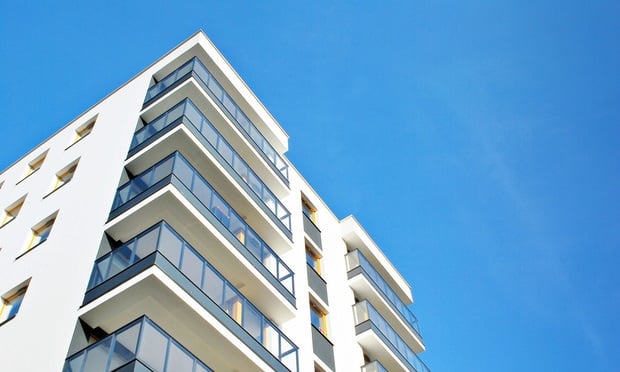 Lewis: Seniors housing “is a product type that lenders like, and that draws private money in.”
Lewis: Seniors housing “is a product type that lenders like, and that draws private money in.”
PORTLAND, OR—How is the seniors housing market just like every other commercial real estate food group? As is the case with office, multifamily and fill in the blank, seniors housing is feeling the impact–in terms of slowing construction–of the ever-rising costs of labor and materials as well as stricter lending parameters.
The good news here, as Marcus & Millichap points out in its first-half 2019 National Seniors Housing Research Report, is that the slowdown allows supply and demand to catch up with each other. “Both independent and assisted living developers are slowly pulling back on construction,” the report states, “a reflection of tighter lending and rising construction costs. Although development has been above unit demand on a macro level, the pace of occupancy erosion has slowed and will likely reach equilibrium this year.”
“While deal volume this year is on par with 2018,” explains VP Adam Lewis, director of the firm's National Seniors Housing Group, “we're seeing supply balancing out, and through the end of the year we'll see equilibrium on a macro level.”
According to the report, the independent living segment of seniors housing alone ballooned by 8,400 units last year, down from the 12,100 built the year before. But right now, “Developers have 24,000 units underway, representing 9.9 % of existing inventory.”
On the demand side, the report reveals, as of Q1, “occupancy was 87.9%, down 40 basis points from the prior year. As the pace of development eases, occupancy is expected to rise. The stabilized occupancy was 90.4% in the first quarter.”
The picture for assisted living is not much different, although the report predicts stabilization sooner than other segments of the sector: “Stabilized occupancy at assisted living facilities has hovered in the 88% range over the last year after retreating from a post-recession peak reached at the end of 2014. Absorption, meanwhile, has been positive for 15 quarters, indicating inventory expansion as the primary culprit to softening occupancy. In the past 12 months, 16,300 units came online, and nearly all of those were added at properties with a combination of care. Some relief may be emerging for operators, however, as construction as a percent of inventory continues to decline. As a result, occupancy at assisted living facilities should reverse course before other seniors housing segments.”
An aging population, many of whom are leveraging current high home prices for the good of their retirement, is helping to fuel that demand, especially in the entry-level seniors housing segment, independent living. Since the population seems to provide a never-ending supply of potential residents, is seniors housing recession-proof?
“I hate the phrase,” says Lewis. “It's hard to say any real estate investment product is recession-proof because there's no complete control over the product, and there are so many moving parts. But given current market conditions and the aging population, this product type will find itself in a really good position despite any adjustments in the economy.”
If there is a “yes-but” in this healthy scenario, it can be found in escalating operating costs. “Wages in the sector outperformed the national average last year,” says the report, “climbing 4.0% to $18.59 per hour. Assisted living was the largest contributor to the increase following a 4.5% jump in wages to $16.73 per hour. Wage pressure will likely continue to intensify as the sub-four percent unemployment rate forces increased competition for staff.” This is in addition to the costs added by the above-mentioned construction scenario.
None of that, says Lewis, “affects the volume of investor interest in the product type–even if the profile of the investors themselves is changing. Buyers expect to pay a fair price based on these dynamics. I expect more of a pricing adjustment than a demand adjustment.” This is especially true as a greater number of private investors take up the slack left by institutions that are exploring other options, in large part due to those operating costs and their eye on greater returns.
“Last year, institutional owners transferred some of their assets into private-buyer hands as they looked for efficiencies in the wake of higher costs,” the report states. “Approximately 50% of all deals had a private investor on the buy side, up from 45% the prior year.”
It's a trend slated to continue. “We'll see institutions continue to sell more than buy, and our private clients are more in a buy mode,” says Lewis. “It's a product type that lenders like, and that draws private money in. Private players also often run their own facilities, so there are economies of scale, especially if you're local. You can take advantage of opportunities institutions can't.
“They might have more local data than institutions since they live there every day,” he continues. “There are advantages to working in a local market, knowing local operators and all the players in town. Looking at the market as a whole, there's cheap debt, strong demographics and a strong occupancy that will only improve in time.”
In all, says Lewis, “There are few deals out there for investors to put their money that will offer better returns than seniors housing, and for those who already own and understand it, they definitely won't find any.”
© 2024 ALM Global, LLC, All Rights Reserved. Request academic re-use from www.copyright.com. All other uses, submit a request to [email protected]. For more information visit Asset & Logo Licensing.








